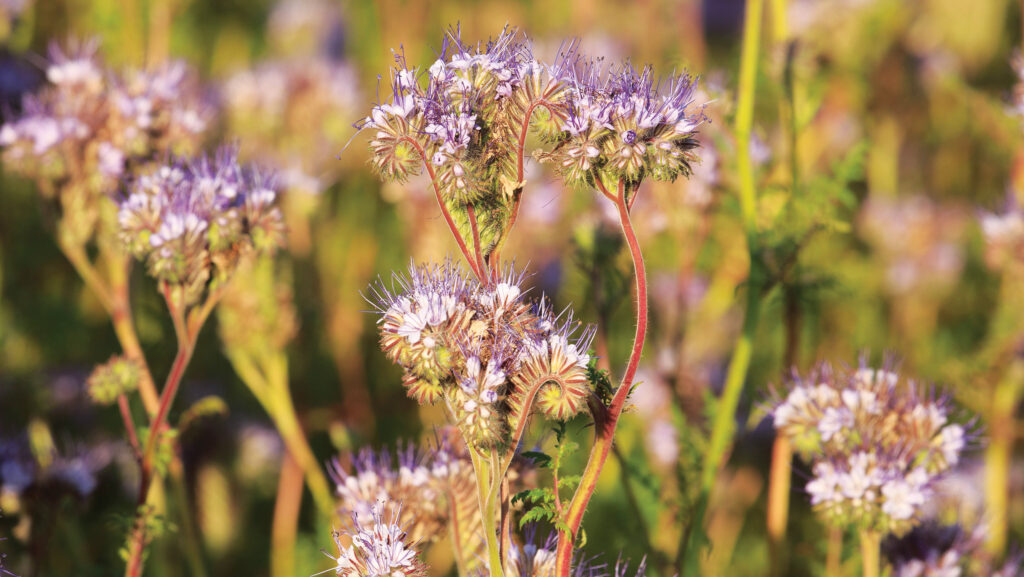How to avoid weed burdens after land comes out of SFI
 ©Tim Scrivener
©Tim Scrivener Land coming out of some Sustainable Farming Incentive (SFI) options must be managed carefully to avoid unintended weed burdens in following cash crops.
For options such as winter bird cover, the whole aim of the mix is to set seed to provide overwinter food, so managing weed risk in following crops is challenging, especially where options have been established over large areas.
See also: Why we could see increased demand for British oats
Weeds of warning
Thistles and chicory are two perennial weeds that can be problematic within multi-year options, warns Alice Cannon, Hutchinsons foundation technical manager.
These options include winter bird food (CAHL2) or pollen and nectar mixes (CAHL1).
“With strong, deep tap root, thistles can be difficult to deal with once they’ve established, as can chicory, which often develops into a massive, high lignin content plant, that can take hold if you’re not careful,” she says.
Species such as phacelia and radish will also set seed and regrow. Chicory can be problematic, but where it is present in herbal leys it is less likely to set seed due to regular mowing or grazing.
“That said, it will have set a good root system over two or three years, so could be very stubborn to control after the herbal ley has ended,” says Alice.
In other situations, growers may find that blackgrass populations have increased as the weed has been given opportunity to set seed.
Carbon and nitrogen
Mixes in the ground for two or three years can generate a large carbon biomass that requires soil nitrogen reserves to breakdown.
Placement fertilisers and early nitrogen applications in following crops may be needed, where permitted.
Managing weeds within options
It may be possible to manage weeds within certain SFI options.
Legume fallow (CNUM3) rules, for example, allow spot treatment or weed wiping of invasive non-native species, nettles or injurious weeds such as ragwort, creeping/spear thistle and broad-leaved dock.
“This is useful, but if you’re going to do it, make sure you take photos to evidence everything,” says Alice.
When mowing legume fallow options, Alice recommends doing so when crops are “about a foot tall” to allow it to start regrowing before it is sprayed off.
This is because spraying off a plant when it is producing seed is not as effective compared with applying the herbicide when it is smaller and actively growing.
She also suggests using a hormone-based glyphosate product, such as 2,4-D plus glyphosate, as glyphosate alone may not be strong enough.
“This helps spray penetrate right down to the ground, giving much more effective control.”
Rethink herbicide strategy
Growers may need to “break the mould” when controlling problematic weeds in commercial crops following certain SFI options.
“For something like phacelia, you can usually take it out in the following crop without really changing your standard herbicide approach, but for thistles or chicory, you may need to think differently,” she says.
Waiting until the traditional T1 timing to tackle thistles in winter wheat, often means they get too big to control, so an earlier additional herbicide in February may be required.
“Remember, the rest of your ‘normal’ weeds, such as poppies, cleavers and the like, won’t have grown by then, so you’ll still have to go back again at T1 in April to treat these where necessary.”
Growers should think carefully when it comes to herbicide loading and sequencing to make sure limits on acetolactate synthase (ALS) sulfonylurea chemistry are not exceeded.
“If you plan to use two ALS applications in the spring, you won’t be able to use that chemistry in the autumn.”
She points out that weeds need to be actively growing to take up active ingredients effectively, which may not always be the case in February.
In some situations, complete control may not be possible, and growers may need to allow a couple of seasons to clean up any weed legacy.
Choose following crop carefully
When bringing field-scale options back into cropping, Alice says to choose crop type carefully, and consider how best to manage it.
For many SFI options that end in summer, such as legume fallow or pollen and nectar mixes, growers may want to go into winter wheat.
This can be effective and allows for a wide range of herbicide options. However, she says to avoid growing seed crops in that first year given the risk of weed regrowth.
For overwinter options, such as winter bird food, the most likely following crop option is spring barley or wheat, as there is a reasonable range of chemistry, and decent crop competition over weeds.
In these situations, she advises growers to avoid spring beans or peas due to a lack of available chemistry to clean up crops.
“Likewise, I wouldn’t follow with sugar beet either, as although we’ve got the chemistry, weed control is already a challenge, let alone with new weeds to deal with.
“For spring oats, there are not any real pre-emergence options, but there are post-emergence.”
Crop rotation could also be used to help address weed issues in other ways.
“If a field is in winter bird food and is inundated with fat hen, for example, you will never be able to control that while it’s in the bird food option.”
In this instance growers could consider if there’s scope to move the cover to another location and use a commercial cereal crop to clean up the fat hen and any other weeds.
“It’s about getting the basics right, thinking carefully about rotation and establishment.
“If you terminate cover correctly and follow it with the right crop where you’ve got the chemistry available, you stand a better chance of managing any weed issues that appear.”
Managing blackgrass in legume fallows
If growing legume fallows in blackgrass situations, agronomist Alice Cannon advises growing a mix containing grasses and legumes which increase competition against the grassweed.
These options can be mown as required with no restrictions within the first 12 months once blackgrass begins to head.
However, Alice notes continuous mowing can lead to a switch in blackgrass growth habit which makes it shorter and more difficult to control.
In year two, fallows can be mown between March and mid-June, leaving eight weeks uncut in the summer.
Alice notes that growers may be better off in the longer term accepting the slightly lower payment of multi-species cover crop options (for example SAM2/CSAM2, SOH2 and SOH3), that allow for blackgrass control, rather than higher paid options such as winter bird food that do not.
“The first step would be to sow a winter cover in August. That would be sprayed off in March, followed by a spring-sown cover crop, which would remain in the ground from March until June.
The next stage would be the summer-sown cover, lasting from June until August. The total support payment would be £455/ha a year, which is often better than spring bean gross margins.
“This regime offers a break in rotation, plus three opportunities to bring blackgrass under control and potential to provide a clean and fertile seed-bed which would boost first wheat yields,” she says.

